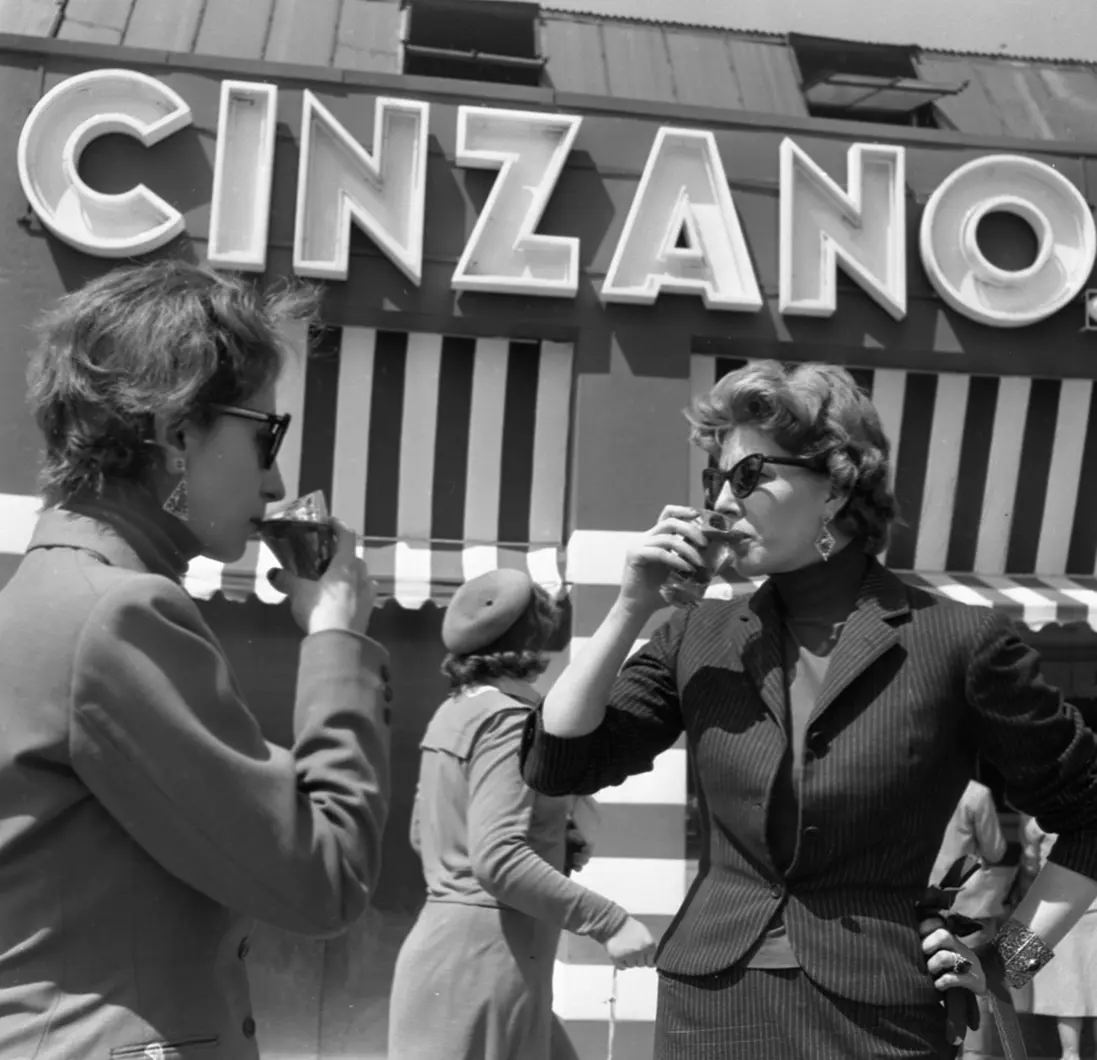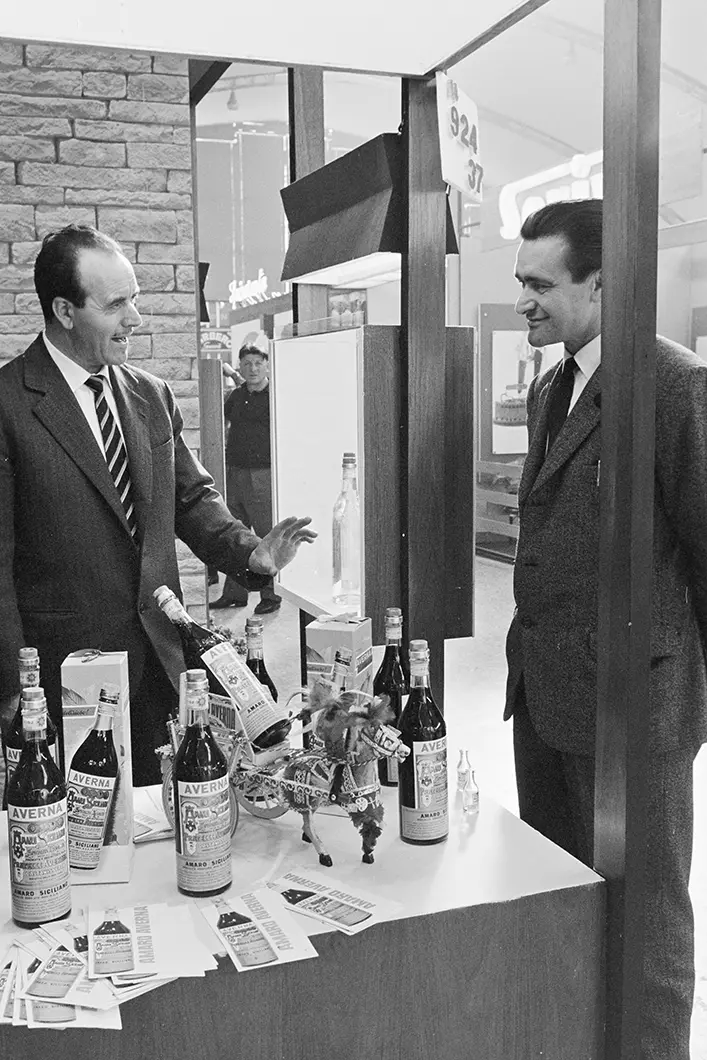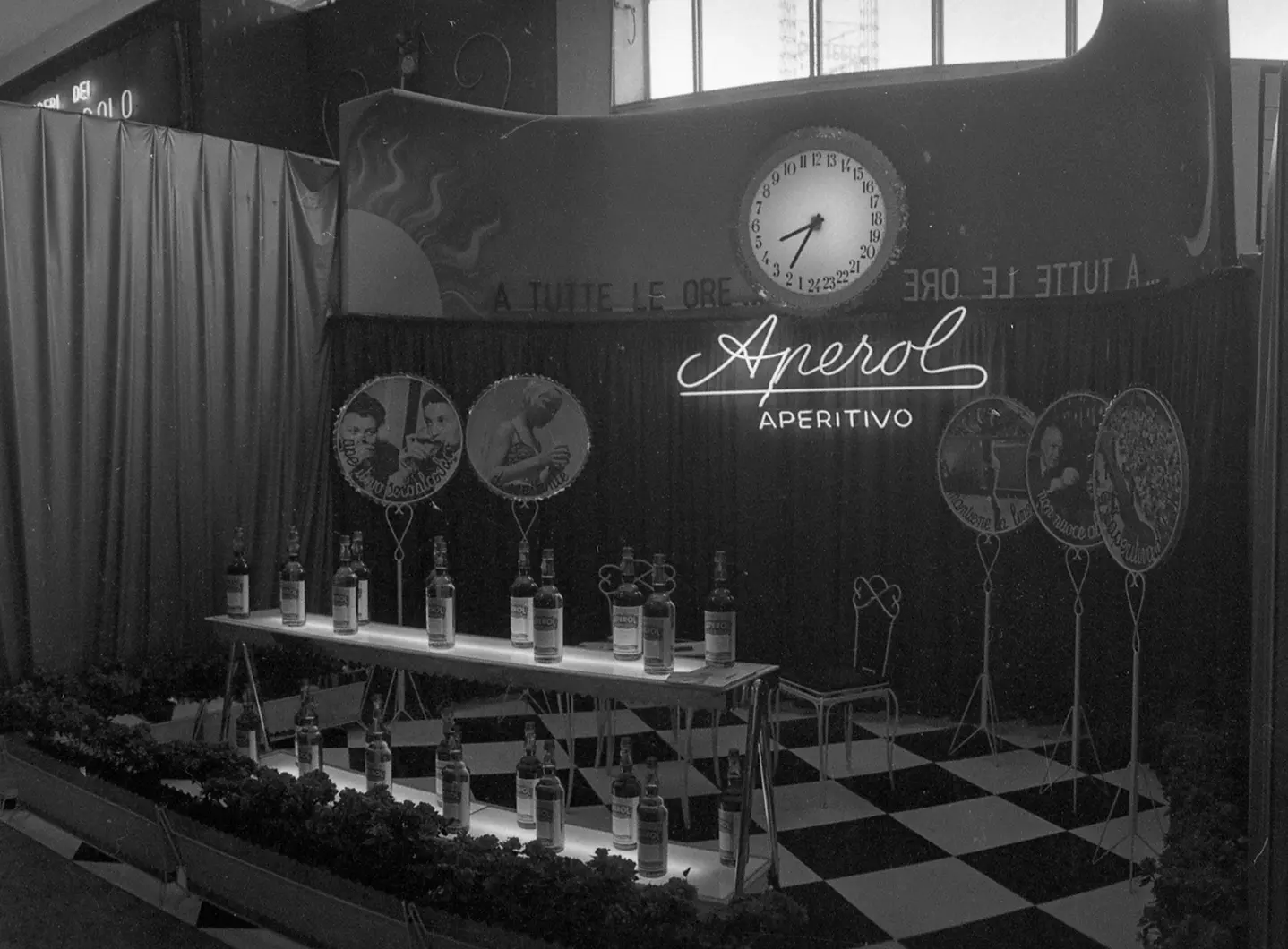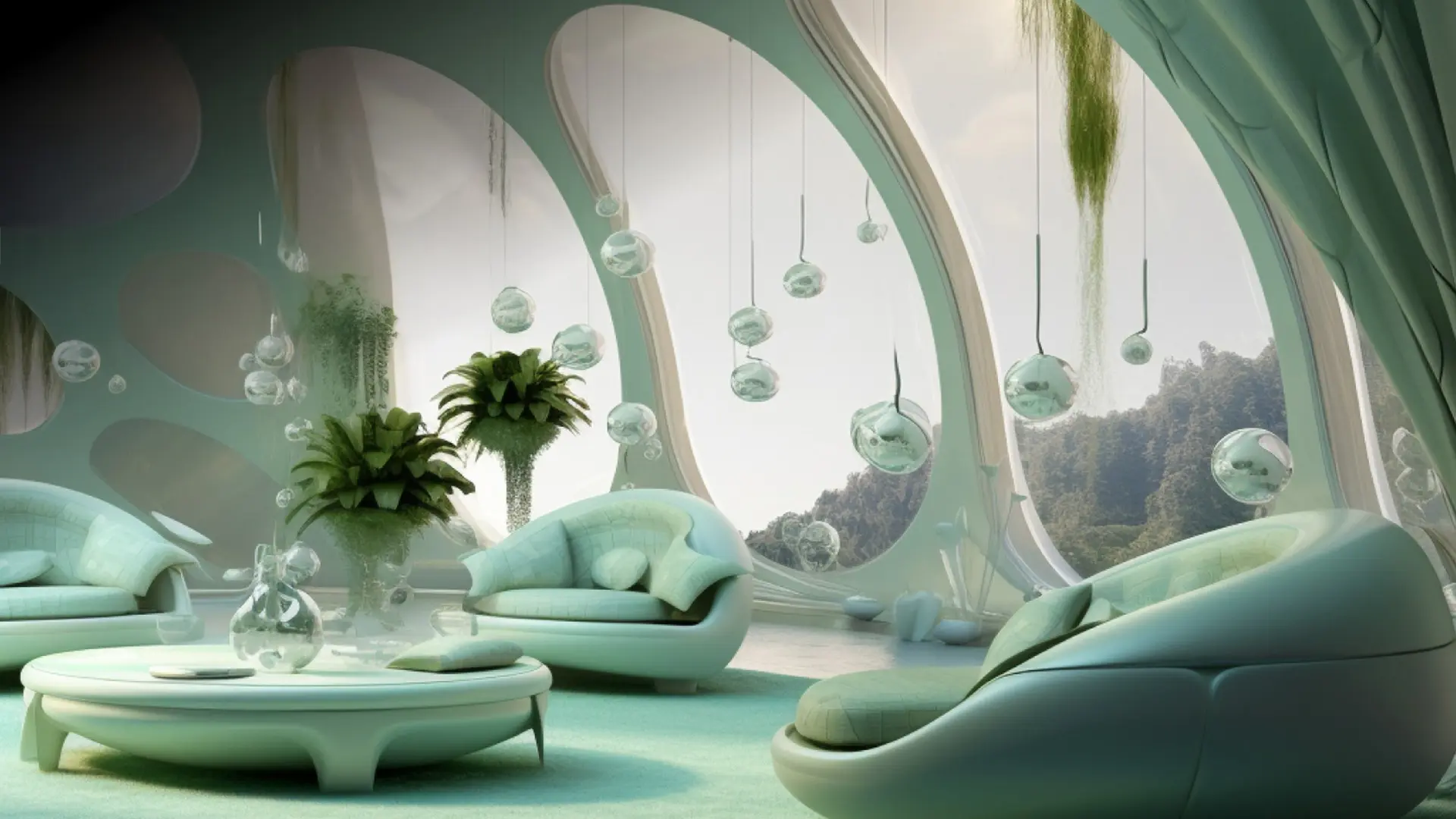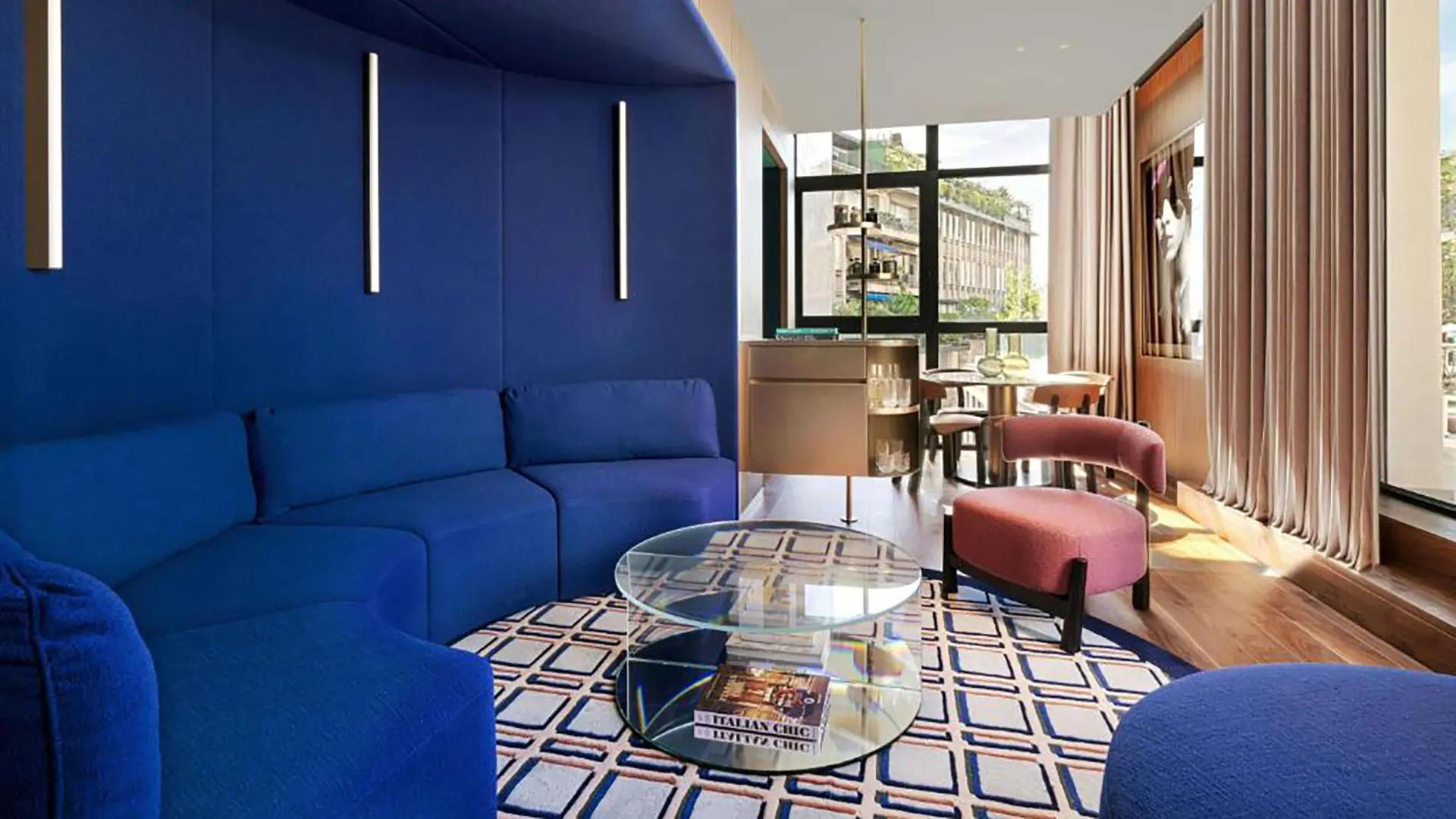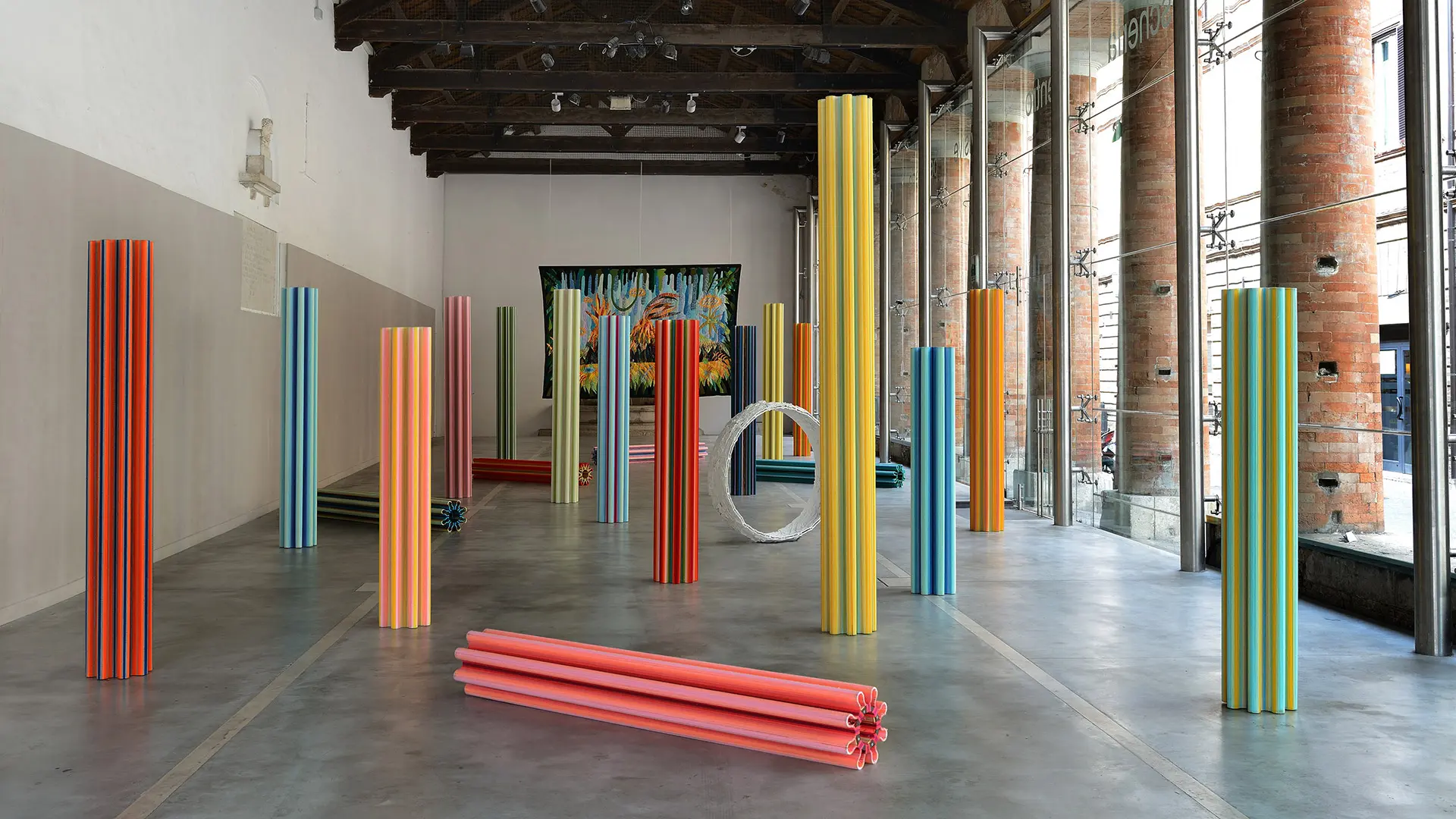From the Tokyo Design Awards, to the NY Product Design Awards & Architectural Design Awards, Best in Design, the NEB Trophy Design Competition, the Good Design Awards® and the Africa International Design Awards (AIDA), all the international news not to be missed in 2026
The history of the Italian Aperitivo, born at the Milan Fair
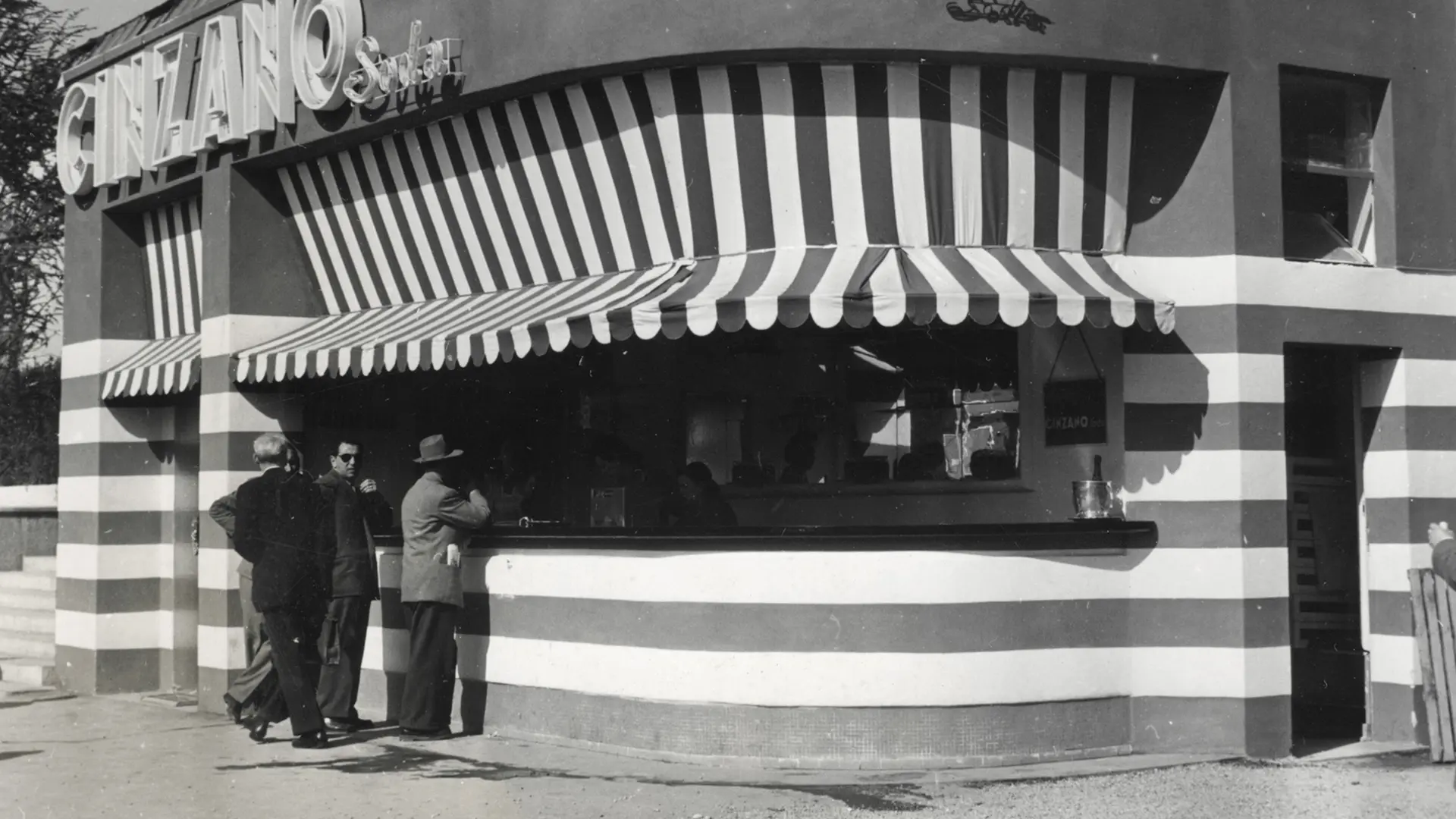
Cinzano tasting and sale kiosk at the Milan Trade Fair in 1951, ph. courtesy Fondazione Fiera Milano historical Archive
Have you ever wondered how, when and where some of your favourite Milanese drinks where born? Here we go through the history of local companies that changed and revolutionized the aperitivo industry
Milan may be known as one of the capital cities of fashion and design, but not many know that many companies dominating the food and beverage sector were born in the northern capital. However, this sector has a rich history that is intertwined with that of la Fondazione Fiera, as not many people know in fact that many brands were launched or at least popularized at the fair. Indeed, many are the success stories that made the Milan Fair important for the creation of what we now call, the typical Italian aperitivo. Let’s explore the history behind some of the most renowned ‘aperitivo’ brands together, thanks to the incredible stories collected by the historical archive of the Fiera Milano Foundation.
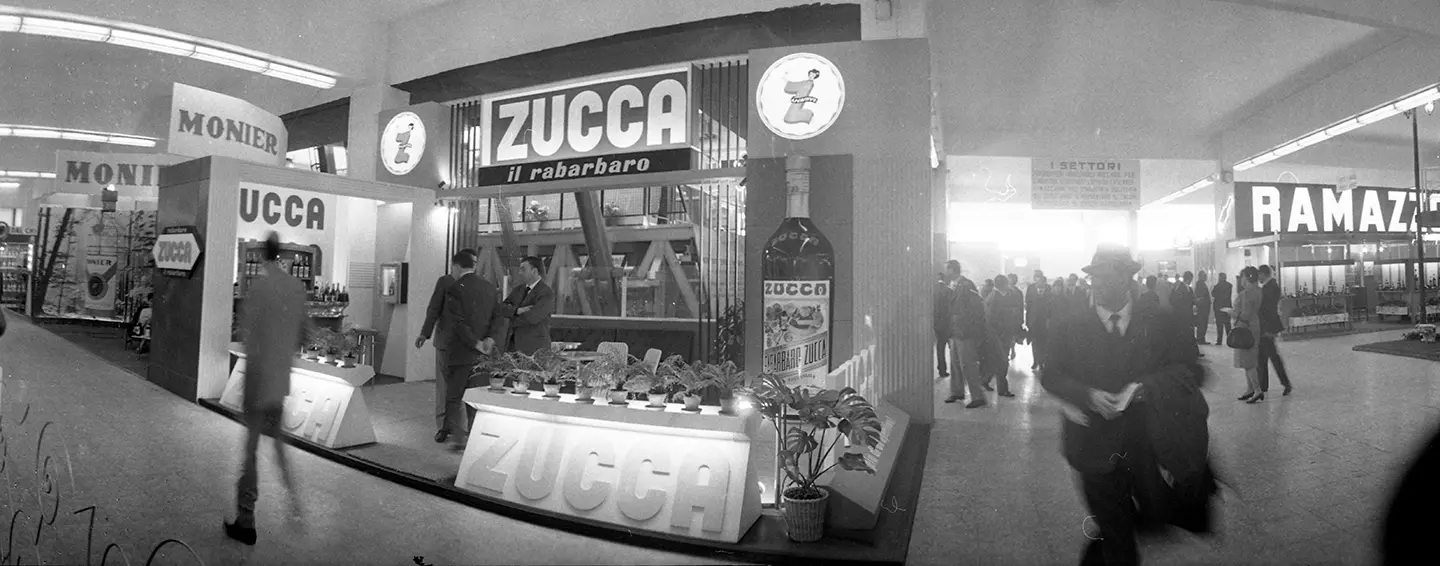
Zucca Rabarzucca stand at the Milan Trade Fair in 1963, ph. courtesy Fondazione Fiera Milano historical Archive
Before there was the Camparino bar, there was the Zucca Caffè. Not many know that the infamous Camparino bar was owned by the Milanese bitter brand Rabarbaro Zucca from 1996 until 2012. This Italian bitter has a rich history linked to the city of Milan: created in 1845 in the artisan workshop of Ettore and Tilde Zucca, it is made from rhubarb and other natural flavors. A first experiment gone well, Rabarbaro Zucca was then popularized by the entrepreneurial spirit of Ettore and Tilde’s son, Carlo, who transformed his parents’ first foray into an industrial business, and subsequently, by his grandsons, Emilio and Gerolamo, who then expanded the business beyond the city of Milan.
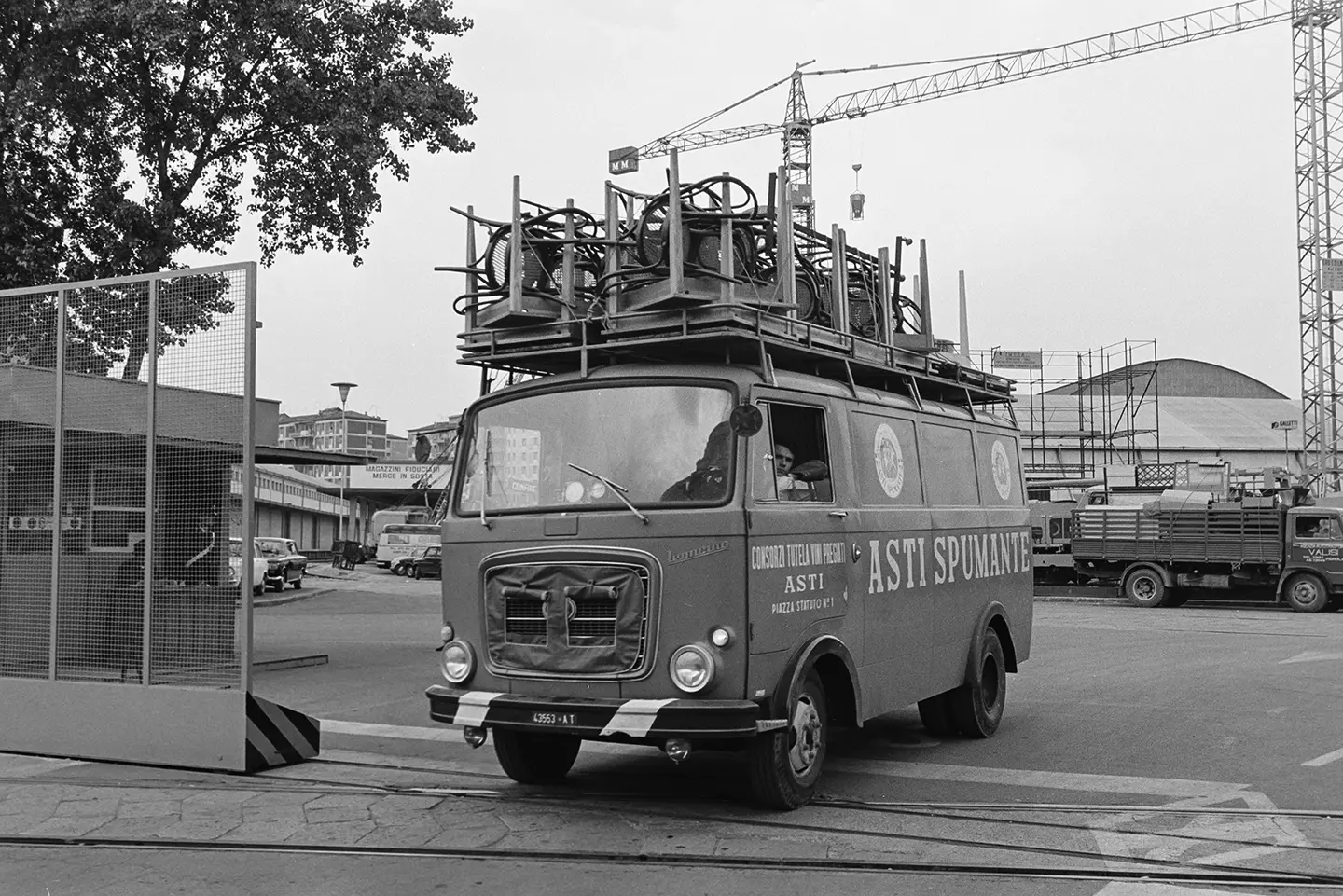
OM Leoncino truck at the 1967 Milan Trade Fair, ph. courtesy Fondazione Fiera Milano historical Archive
Amaro Ramazzotti is certainly one of the few brands which has participated to Milan’s Fiera for more than 50 years in a row. But where does it stem from? The story tells that in 1815, a pharmacist of Bolognese origin named Ausano Ramazzotti, determined to produce a flavored drink, began experimenting with a blend with ingredients from all over the world. After several experiments in a Milanese laboratory, what came out was what today is the Amaro Ramazzotti.
Made from the maceration of 33 varieties including herbs, spices and roots, its recipe is still secret and handed down over from generation to generation over time. The only few ingredients known to the public include the peels of Sicilian oranges, star anise, cardamom, and cloves. A few years later, in 1848 to be exact, Ausano opened a bar in Via Canonica where they began serving the Amaro Ramazzotti, and the rest is history.
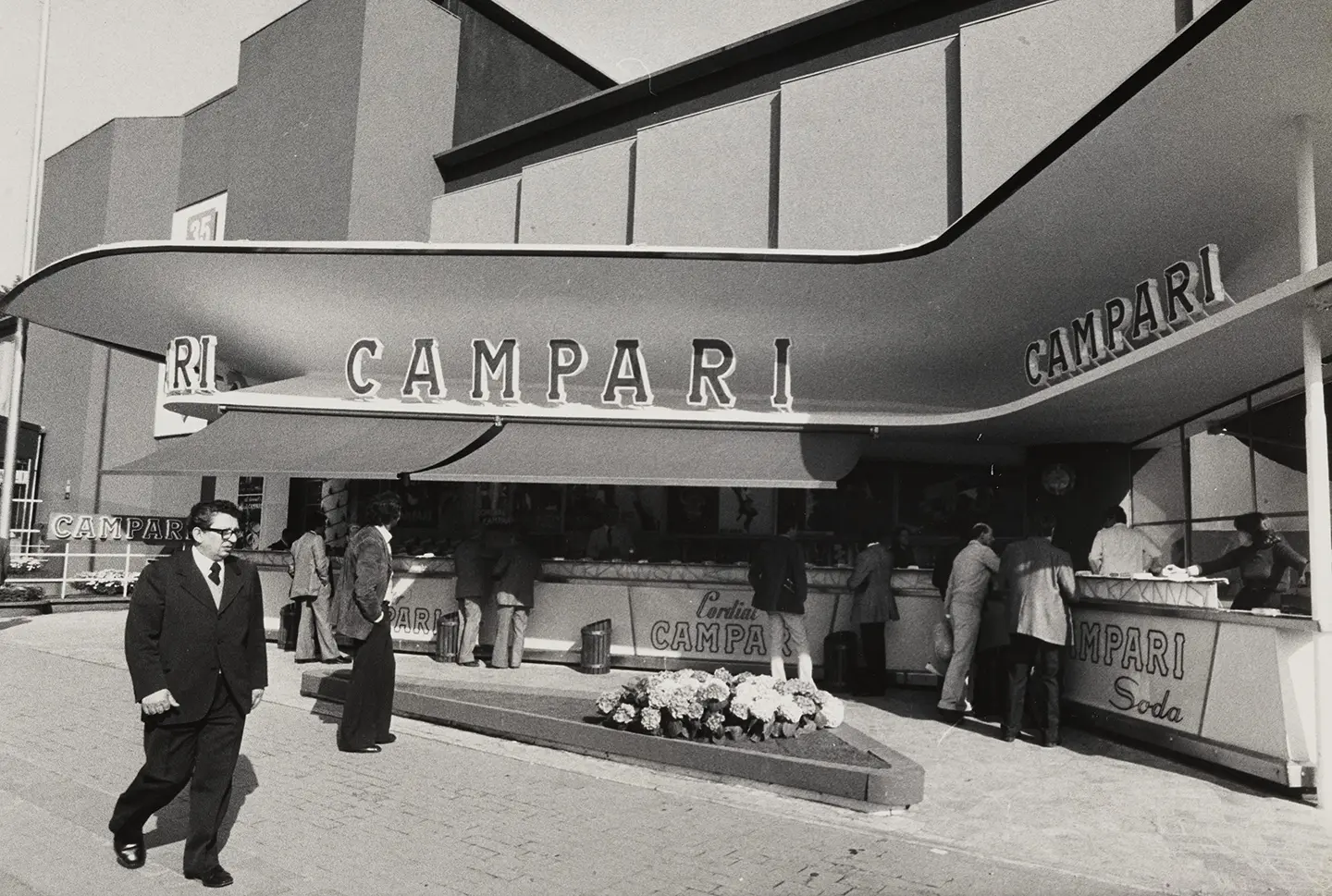
Campari kiosk at the 1977 Milan Trade Fair, ph. courtesy Fondazione Fiera Milano historical Archive
Now a world leader and owner of many other soft drinks, Campari is well known for its historic soda drink, but it has a rich artistic history. Founded by Gaspare Campari, who started a distillery in Milan in 1860, which was later followed by the opening of Caffè Camparino in Galleria Vittorio Emanuele II, in 1932 production of Campari Soda began and an effective advertising campaign entrusted to posters by Fortunato Depero and other artists of the time was decided. The original "inverted goblet" bottle is still a creation of the futurist artist.
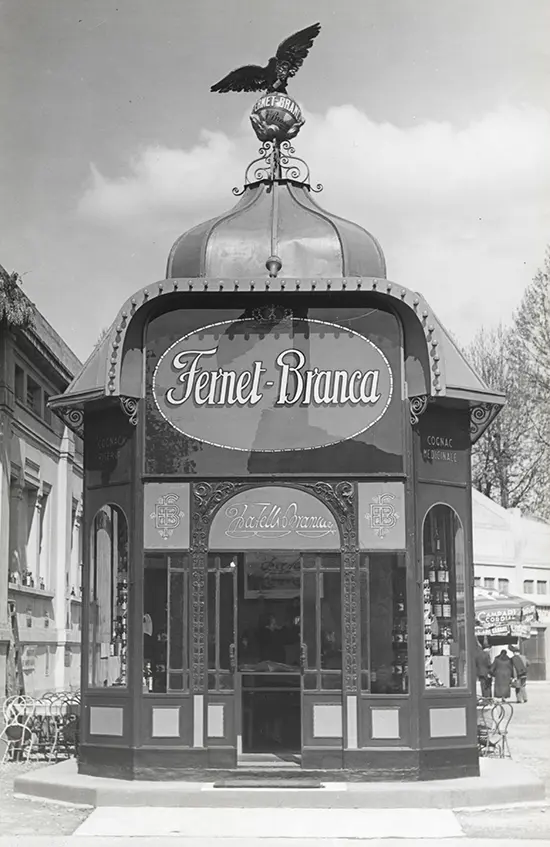
F.lli Branca Distillerie in 1938, ph.courtesy Fondazione Fiera Milano historical Archive
Known to many for its iconic Brancamenta and Fernet Branca liquors, Fratelli Branca Distillerie was founded by Bernardino Branca in 1845 in Milan, who likewise many of his peers began experimenting with a medicinal remedy in his workshop in Porta Nuova. In 1905, the company's trademark, an eagle with spread wings clawing a bottle with the world below, designed by painter Leopoldo Metlicovitz in full Art Nouveau style and destined to invade bars, restaurants, and pastry shops around the world, was officially registered. The brand then donated Torre Branca, in the heart of Parco Sempione, to the city of Milan, while in 2009 the Collezione Branca museum opened to the public, a precious testimony of a great industrial and manufacturing history of our country.


 Exhibitions
Exhibitions
